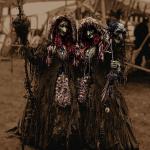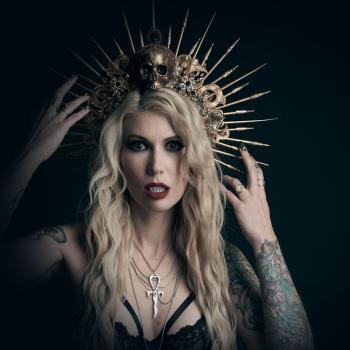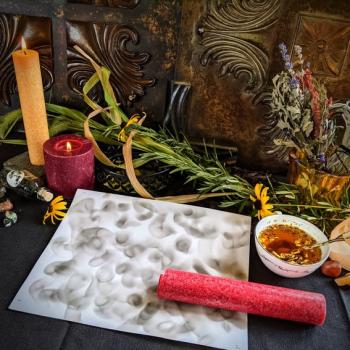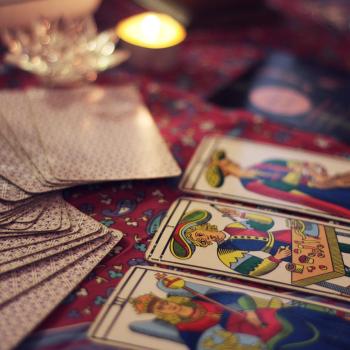Putting the “I” in W(I)tchcraft
Witchcraft is highly individualistic. Is it more practitioner centered than we give ourselves credit for? Pagan devotional practices are centered around the gods, and are closely aligned with magical practices, one often being called the other. However, the actual craft and art of sorcery is a skill unique to the practitioner like any other artform. This is the individualistic witchcraft that I am talking about. Of course there are those practices that call upon the aid of spirits, deities and other non-physical entities, but are they in fact the real power behind these rituals? I’m not so sure.
The witch and the sorcerer are the initiators of such encounters. We make the call and act as the beacon, providing these beings with a means of manifestation. While spiritual powers can manifest independently of human evocation they are bound to the laws of the spiritual world. Aside from theurgical rites of divine communion, sacrificial offerings and reverence, where the gods are the focal point; operations of sorcerous power hold the gods as witnesses on the periphery. They interact if they so choose, but the impetus for such interactions is initiated by the witch.
Witchcraft, by its traditional definition, is inherently individualistic, as seen in the nature of the Master of Witches, the Horned God and the various luciferian and mercurial spirits of the Craft. Wisdom and power are gained through self-sacrifice and rebirth, whether it be hanging on the World Tree, a Fall from Grace, or any number of shamanic deaths by spiritual fire or reducing oneself to skeleton in the chthonic realms. it is the fierce individual spirit, the desire for power, and for knowledge that drives the work of the traditional witch. We seek liberation through the elevation of the self, not through a code of morals and ethics, but by honing our true will through many symbolic deaths and resurrections.
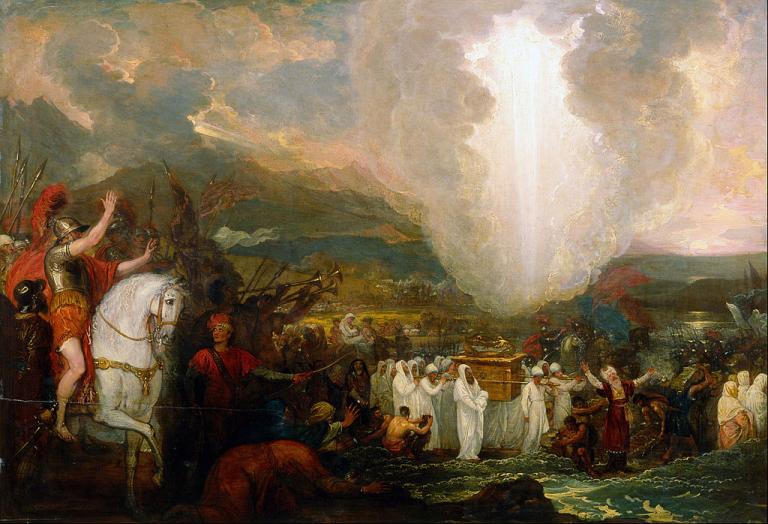 Joshua Crossing the Jordan River With the Ark of the Covenant. Public Domain.
Joshua Crossing the Jordan River With the Ark of the Covenant. Public Domain.
Of Gods, Heroes and Men
Christian doctrine states that man was created in the image of God. Again, I’m not so sure. In the Old Testament we see God appearing in his wrathful glory, as a pillar of fire in the sky and sending plagues upon mankind. As Christianity developed into the political tool of the patriarchal Roman Empire, the writers of the New Testament five him more human-like attributes. He is described as a father, an architect, and a watchmaker. he is described as a lord and king, ruling over his feudal kingdom like the monarchs that embraced him.
In pagan traditions the boundary between men and gods is less easily defined. There are demi-gods and deified ancestors as well as interactions between the gods and humans, Sexual encounters between the two were even commonplace. The gods themselves were known to take human forms. In their stories they are lovers, healers, tricksters and warriors. They have roles as blacksmiths, scribes and huntresses. The gods of pagandom depict the sacred nature of humanity. They represent us at our apex, through our arts and sciences, and embody our darkest and most primal parts.
We are beings of a spiritual nature. We have consciousness, the original and eternal state of the Universe, but we are also physical creatures. We are vessels of this spiritual force, bound up in blood and bone. We are the axiom, “as above, so below,” and we contain the macrocosm. We are intermediary beings, standing at the threshold of spirit and matter, capable of acting in both worlds.
 Cloud Nebula. Goodfreephotos.com
Cloud Nebula. Goodfreephotos.com
Creators of our Craft
Symbols and rituals contain power because of the meaning we give them. While nature is inherently sacred, we make our own sacred spaces because we are of both worlds and during ritual we are uniting the two so that we make work in them simultaneously, thereby acting in our true nature. Our tools are an extension of our power, representations of the currents that flow within us. They are physical manifestations of what we already carry within. While these forces exist independently of us, we are the ones that shape them, creating new forms.
The ebb and flow of the seasons, the waxing and waning tides of the Sun and Moon are eternal and undeniable. However, the emphasis placed on specific days of the week and their planetary correspondence is based on an arbitrary set of symbolic associations that only exist because we deem it so. The succession of days named for the seven planets of the ancient world are the same cycle of light and darkness that follows the greater cycle of the solar year. The ancient Celts began their day when the Sun set. Beginning each day in darkness just as the Universe itself began.
The calendars of the ancient world were based on the phases of the Moon. Each month began with the waxing crescent. The lunar year was usually 10 or 11 days short of the solar year, and would quickly become misaligned with the seasons. There were different techniques of adjusting to this fluctuation. The first Roman Calendars followed a lunar model, and in 46 BCE the Julian calendar, named for Julius Caesar was proposed. It was later replaced by the Gregorian calendar that we still use today. Adopted in 1582 during the papacy of Pope Gregory XIII. Currently, the Julian calendar is 13 days behind the Gregorian calendar and the disparity will only continue to increase. Not only is the calendar very different than it was during pre-Christian times; the sun’s movement through the signs of the zodiac is also changing. Some astrologers have even adopted the use of a 13th sign, and planets not discovered until the modern period.
The naming of dates is a human concept used to measure the relationship between events that occurred in the past with the present age, and gives us a point of perspective as we progress through time. This is how we measure our place in the cosmos. It has been discovered that we live in a relative Universe, and that even space and time are subjectively based on velocity, distance and gravity.
Whatever the case, our Craft is an intimate and personal thing often kept secret or shared only with a few close individuals. We are the source of our power, the spark that ignites our magical world, and we must reach deeply into ourselves and into the spirit world and hang on to that which we hold sacred. Our power and our belief is something that no one else can diminish or take from us. We should remember that we are the one’s who chose to stray from the flock of mainstream thought and strike out on a journey of individual discovery and empowerment.


